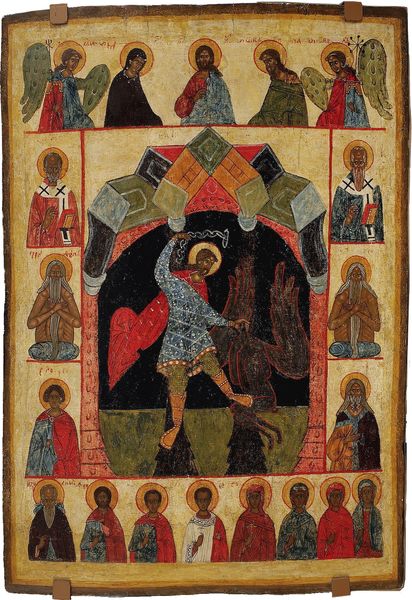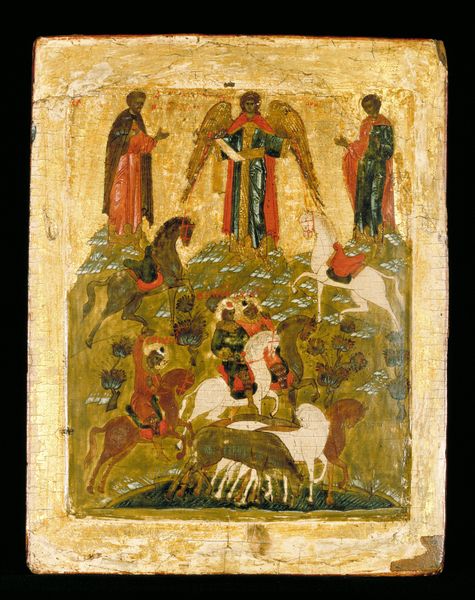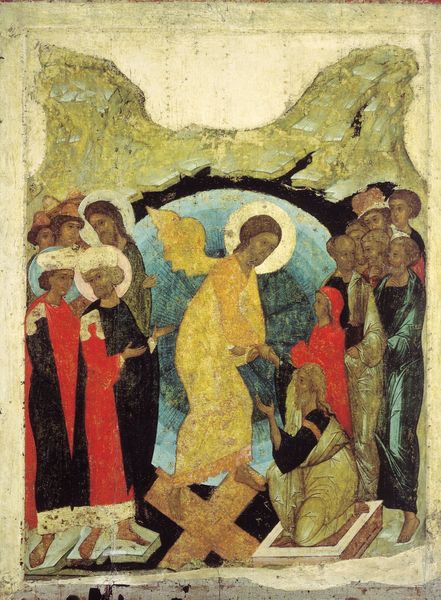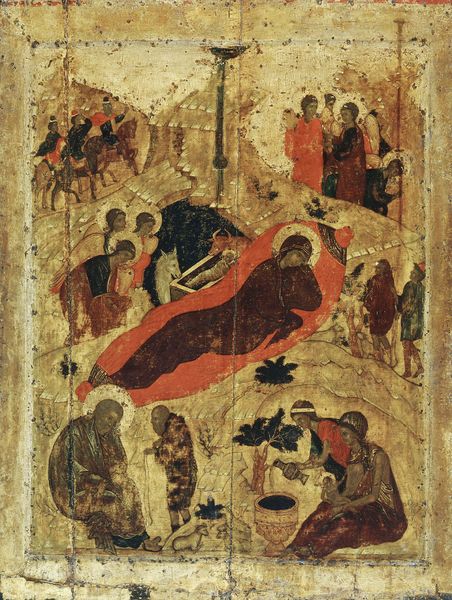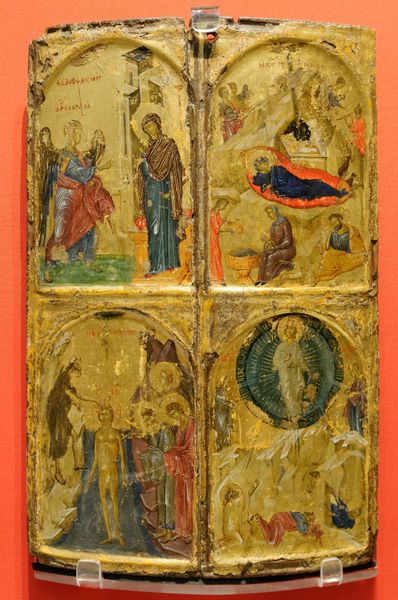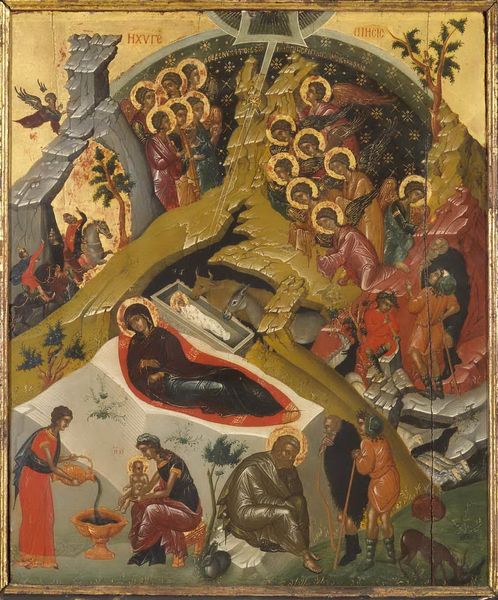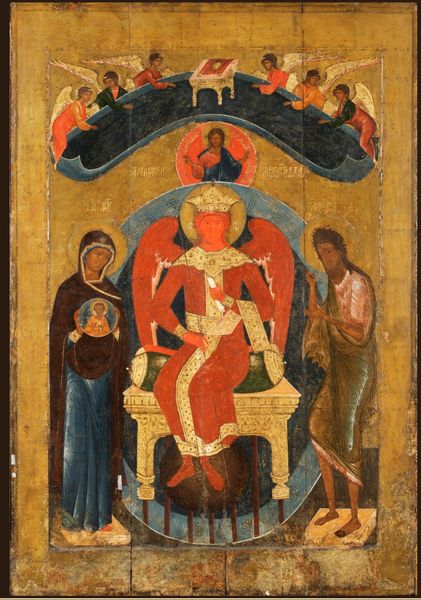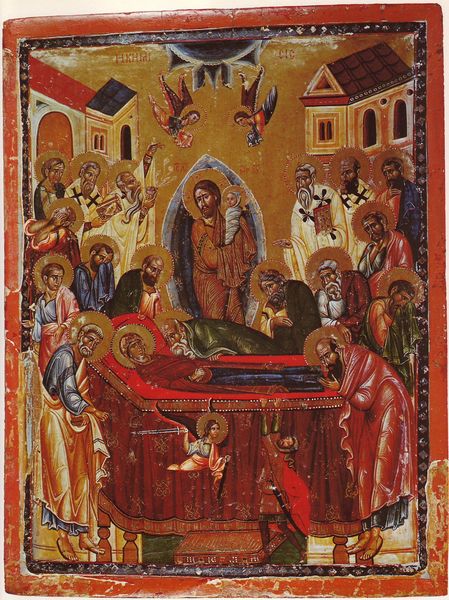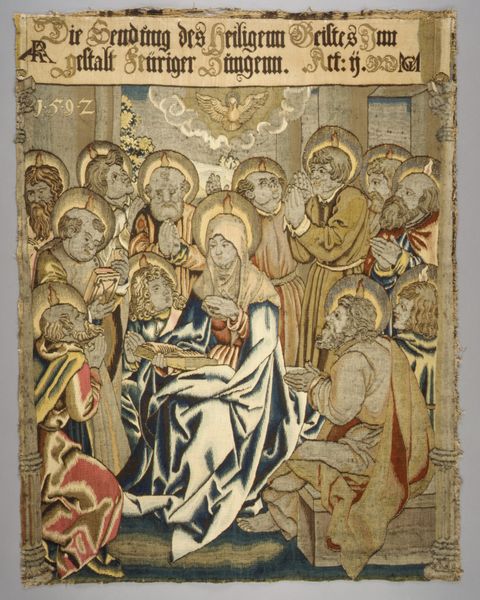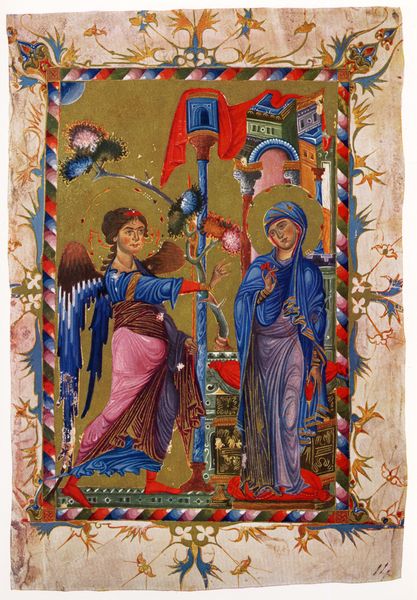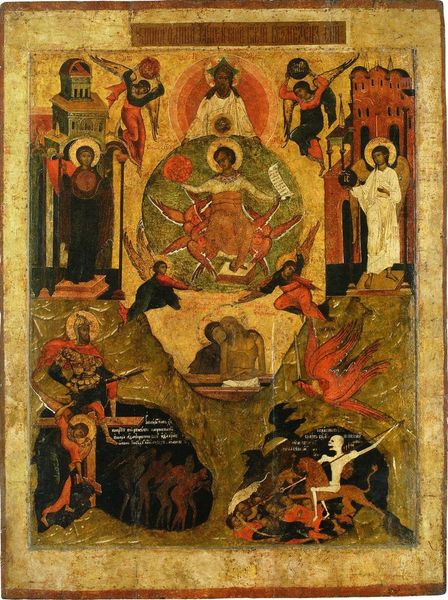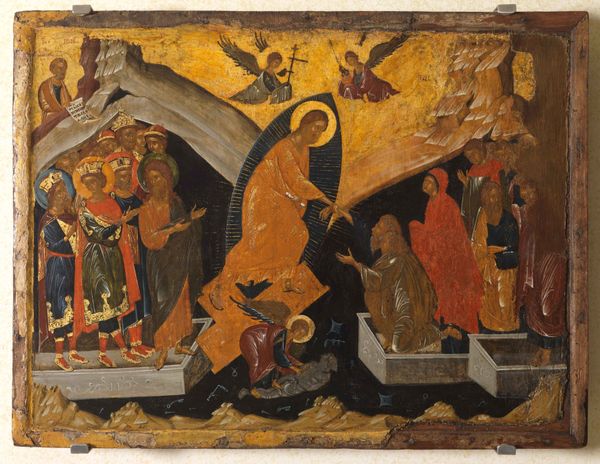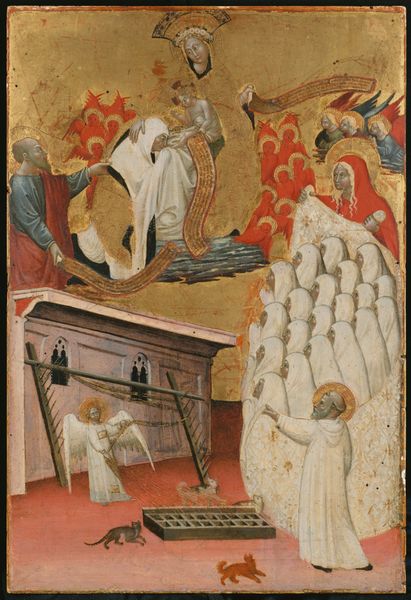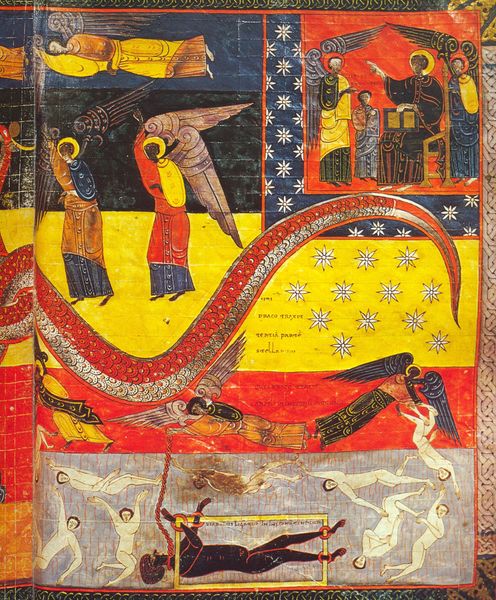
tempera, painting
#
byzantine-art
#
medieval
#
narrative-art
#
tempera
#
painting
#
figuration
#
handmade artwork painting
#
history-painting
#
miniature
Copyright: Public domain
Curator: This miniature, "Passage of the Red Sea," comes to us from the year 1266 and is attributed to Toros Roslin. The medium is tempera. It's a potent scene. Editor: Absolutely. I'm struck by the swirling blues of the sea meeting that solid gold background, an angel soaring above. You can almost feel the chaos and salvation intermingling in those meticulously applied pigments. The materials alone speak to the labor invested in depicting this foundational narrative. Curator: The illumination is deeply rooted in Byzantine artistic traditions, characteristic of medieval Armenian manuscripts. Look at how the figures are arranged – a deliberate hierarchy conveying the divine intervention in the Israelite's exodus. It represents a key moment in religious history, illustrating power and liberation for the Christian audiences of the time. Editor: Yes, but it's not just the divine power; consider the materiality. Roslin has created the whole narrative with expensive materials that speak of the commissioning body: ground pigments bound in egg yolk, demanding a deep understanding of chemical reactions and aging... gold leaf symbolizing celestial illumination. The socio-economic implications are manifest. Who had access to such things and, more importantly, whose stories were deemed worth immortalizing in such exquisite form? Curator: The use of tempera and gold leaf in Armenian illuminated manuscripts was directly linked to monastic scriptoria. These artistic production hubs became crucial in maintaining and propagating religious ideologies. This image not only displays a religious scene, but also illuminates the power of the church itself. Editor: Exactly! Think of the animal hides meticulously treated to create the parchment, the sourcing of ultramarine from lapis lazuli, possibly transported across vast distances. Each element tells a story about the networks of trade, craftsmanship, and knowledge required to produce this artifact. And all of these tangible elements help communicate faith. Curator: It offers insight into the world view of those who commissioned and viewed it. It signifies an assertion of faith amid specific societal challenges and demonstrates how cultural identity was crafted. Editor: A gorgeous assertion. From pigment to propaganda, "Passage of the Red Sea" really encapsulates how materiality, making, and messaging coalesce. Curator: Yes, how deeply enmeshed images are within history, religion, and socio-political contexts.
Comments
No comments
Be the first to comment and join the conversation on the ultimate creative platform.
